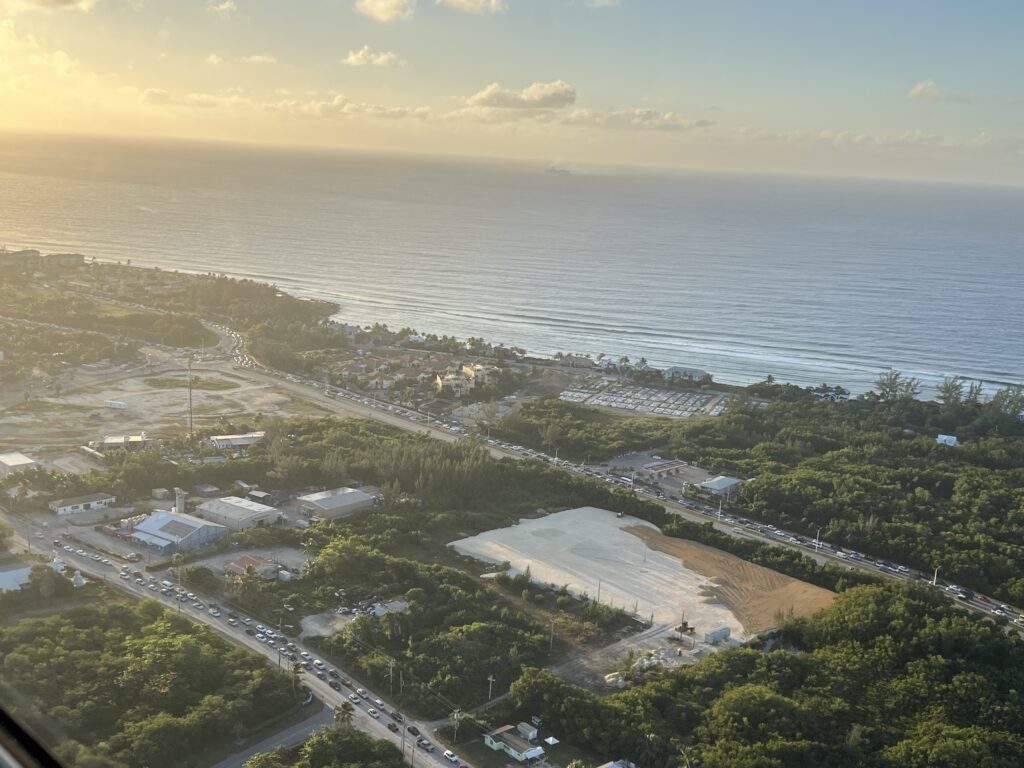Study Area Spotlight
Understanding the Transportation & Mobility study
Transportation and mobility components like travel times, roadway resiliency, congestion issues, and safety affect how individuals live and travel.
Assessing the proposed project’s impact on these components helps ensure the development of a new roadway facility that effectively meets Grand Cayman’s transportation needs while minimising impacts to the natural, cultural, and human environments

Baseline Conditions
The majority of population and jobs are centred in George Town and West Bay. Residents of North Side and East End face long commutes to access the opportunities in George Town and West Bay, which can make it challenging to reach employment, schools, emergency services, and other resources, located in western districts.
- The only road connecting North Side and East End to the western districts is the coastal road along Shamrock Road and Bodden Town Road.
- Shamrock and Bodden Town Road experience severe morning congestion. These two-lane, undivided roadway facilities can also pose safety concerns due to high speeds of up to 50 MPH and a large number of cross-streets and driveways.
- Pedestrian and bicycle facilities are essentially not available on these main coastal roads, forcing pedestrians and cyclists to share the road with vehicular traffic.
- As the population of Grand Cayman grows, these transportation issues are expected to worsen as demand on the roadway network increases.

Critical Success Factors
The EIA evaluation of transportation and mobility is based on the Critical Success Factors (CSFs) that were established at the beginning of the project during the Terms of Reference phase. The evaluation determines whether the proposed project would accomplish the main goals set forth in the CSFs include criteria like supporting current and future traffic demand and improving resiliency.
Methodology
Data Collection
To analyse current traffic conditions and make projections about future traffic conditions, the project team needed to collect data about how people and vehicles move on the island. The data collected to support the traffic analysis included:
- Turning Movement Counts (TMCs) – Traffic counts collected in the peak hours at key study intersections to support analyses for existing and future traffic operations in the study area.
- Automatic Traffic Recorder (ATR) Counts – Continuous traffic counts over several day, including both peak and off-peak traffic volumes to determine peak hours and peak periods.
- Travel Time Runs – The end-to-end corridor runs in both directions of key roadway segments during both peak and off-peak hours to ensure that analyses are calibrated to existing conditions.
Travel Demand Modelling
After data has been collected, a travel demand model (TDM) is used to forecast future traffic flows. The model uses various datasets, including demographics, land use, available travel modes, travel costs, and transportation details including number of lanes, intersection traffic control, and vehicular speeds. The TDM can be used to evaluate the impact of transportation projects by forecasting the future traffic conditions. The TDM allows the project team to assess the benefit that could be provided by a transportation improvement like the EWA.
Future Year Assumptions
Planned future roadway projects were considered when evaluating future transportation and mobility conditions. While inclusion of these planned projects does not imply they have been approved or funded, they offer the best current representation of what the roadway network is expected to look like in the years ahead.
Population growth and future development can be difficult to forecast. For the EWA EIA, a Land Use Charette occurred in July 2023 to determine future socio-economic conditions. Stakeholders who know the island worked together to develop future growth scenarios. These scenarios were used in the transportation and mobility modelling to project how many people might be using the roadway network in future years.
Other disciplines
Transportation and Mobility model results feed into the analysis of :



